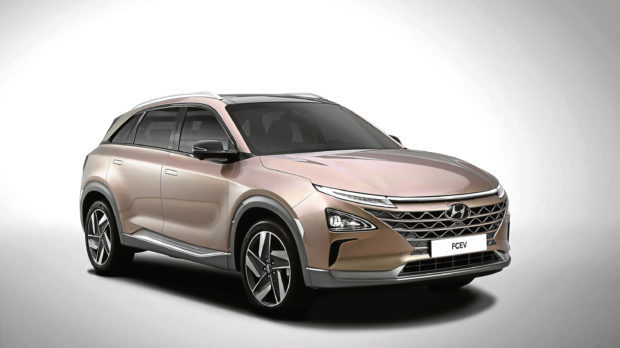Hyundai has announced that its Nexo hydrogen fuel cell electric vehicle (FCEV) will have a range of 500 miles.
This means its next hydrogen vehicle will be capable of driving from Birmingham to Dusseldorf in one charge, and puts its range at almost 100 miles ahead of the nearest competitor on the market.
The Nexo will go on sale at the end of 2018, although Hyundai UK CEO and chairman Tony Whitehorn raised questions about the UK’s current hydrogen fuelling infrastructure.
The Nexo will also have an efficiency rating of 60%, making it 30% more efficient than an average internal combustion engine.
In addition, Hyundai claims the battery technology in the car will be so advanced that the SUV will be capable of enduring 100,000 miles of motoring at 30 degrees below freezing.
Whitehorn said: “When people talk about batteries, and this is a hydrogen-fuelled battery, everybody talks about what the range is. With Nexo, if you started from Birmingham now, you could go all the way to Dusseldorf. That is the distance that this car can go without having to re-fuel.
“A normal combustion engine has a normal efficiency of about 30%. This model has an efficiency of 60%. That starts to really translate into saving energy, being more efficient, as well as not having any tailpipe fumes coming out because all it produces is water.
“Another point as well is everybody says that battery technology doesn’t work in the cold. This vehicle manages to operate for 100,000 miles at -30 degrees. That is a first.
“Why aren’t we moving forward with the future, which is very much the FCEV technology? It’s all to do with infrastructure. In the UK, we need more hydrogen filling stations. But it is coming, the government is gradually giving funding for more and more hydrogen fuel filling stations.
“This vehicle comes to the UK at the end of this year/beginning of next year. This is the future. ”
jmckeown@thecourier.co.uk
